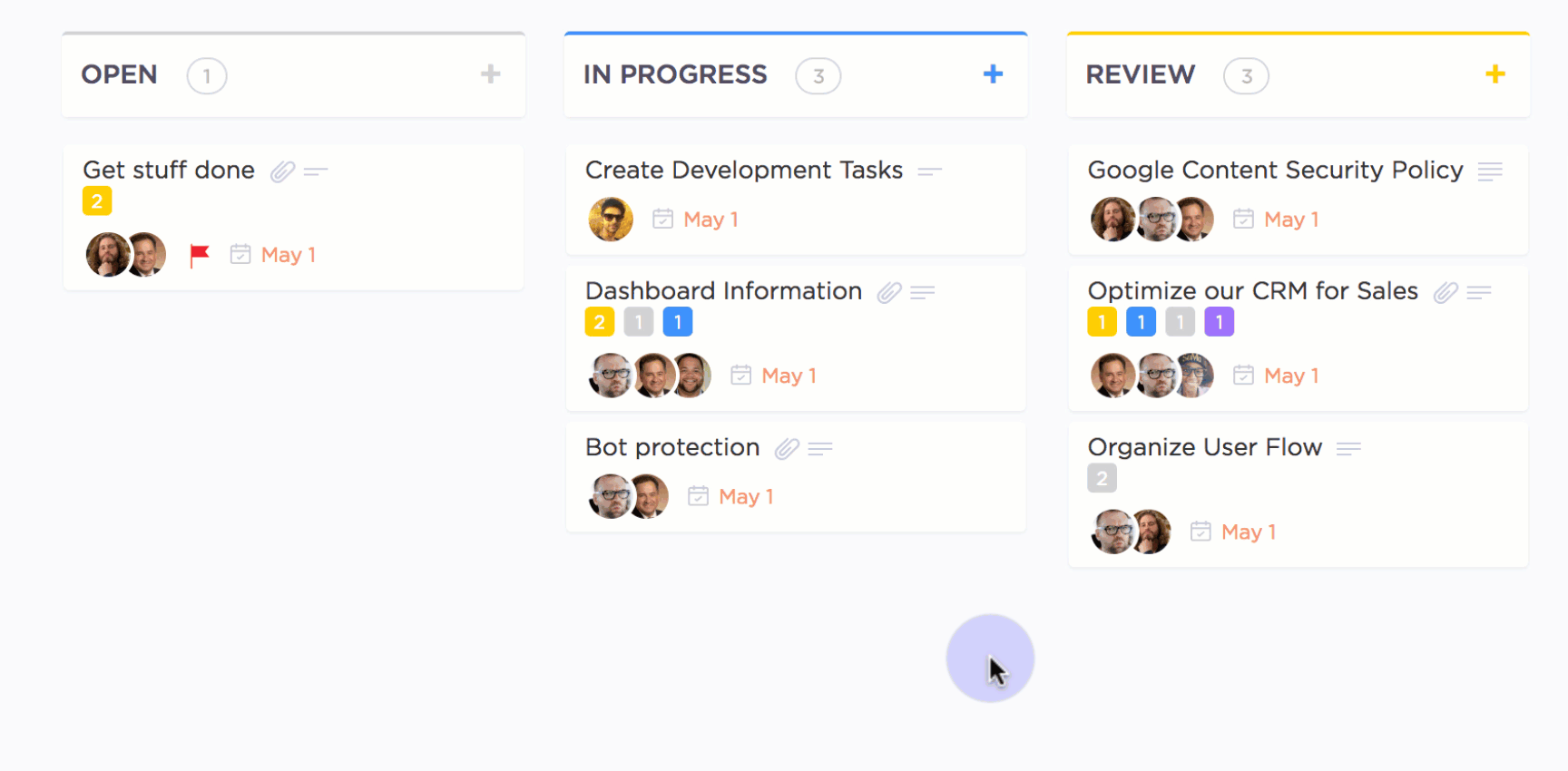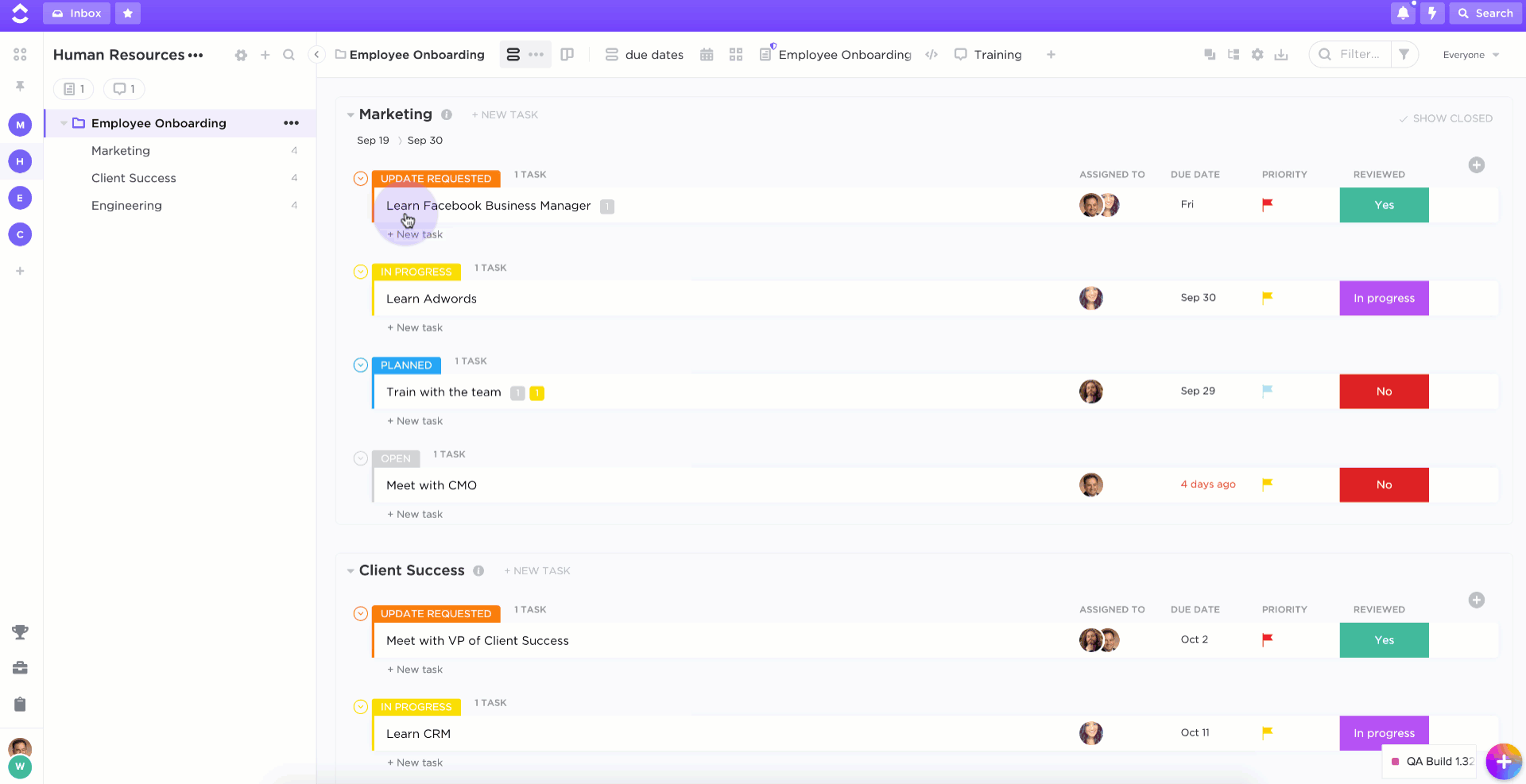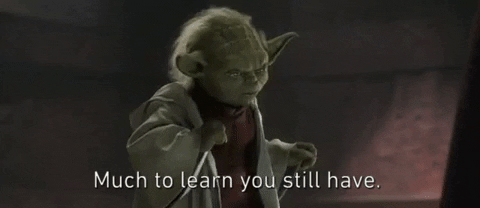

Ready to learn all about Scrum masters and how to become one?
Scrum masters sound a lot like Jedi masters, don’t they?

They have the ‘force’ to empower your Scrum team to achieve things that they wouldn’t have dreamed of!
In this article, we’ll highlight the key Scrum master responsibilities, how to become a Scrum Master, and the one tool every Scrum Master needs!
Let’s begin!
What is a Scrum master?
A Scrum master is essentially the manager of a Scrum team.
They are the mediators between the product owner, stakeholders, and the development team in Agile software development.
If the Scrum framework were a Big Mac, then the Scrum master would be the middle bun holding it all together!

But wait.
Agile, Scrum teams, product owners…what is all of this?!
A quick overview of everything you need to know
I know there are a lot of complex terms we just used.
But just because they sound complex doesn’t mean that they’re difficult to understand.
Here’s a quick overview of everything you need to know:
1. Agile
Agile is a software development methodology where you break your project down into smaller development cycles called sprints. Scrum is a subset of the Agile methodology and also follows the sprint-approach.
2. Sprint
The sprint is the time-frame when Scrum teams have to complete a working model of the software. They usually last between 1-4 weeks.
3. Scrum teams
The term Scrum was coined by Hirotaka Takeuchi and Ikujiro Nonaka, who made an analogy comparing a high-performing team to the scrum formation used by rugby players.

Today, Scrum is one of the most popular Agile methodologies and empowers software developers to craft mind-blowing products using Agile engineering practices.
The Scrum team is a group of cross-functional individuals that work together to make the magic happen.
Here is the cast of characters that play various roles and responsibilities in the Scrum team:
- Product owner: Creates a vision for the final software product by understanding customers’ needs and relaying customer feedback to the developers
- Scrum master: Ensures that the development team is working together efficiently and that the Agile process is running smoothly
- Software Development team: Actively creates the product using Agile engineering practices
- Stakeholders: individuals (usually customers) who valuable feedback to improve the software development process of the product
4. Product backlog
The Product backlog is a list of items detailing the work that needs to be completed during product development. Product backlog items include project tasks, bug fixes, and new product features that need to be developed. During each sprint, teams attempt a few of these backlog items until there are none left.
What does a Scrum master really do?
What’s the difference between a Scrum Master and a juggler with some serious skills?
Not much!

Every day, Scrum masters shuffle between dozens of tasks, so that the Scrum team can be super productive.
Here are the three key Scrum master responsibilities:
- Understanding the needs of the Scrum product owner and the development team
- Acting as a servant leader and imparting Scrum values to the team
- Protecting the Scrum team from any issues
But Scrum masters can’t do all this on their own!
Every project manager needs an Agile project management tool to manage their team.
It’s going to help them consolidate everything and give them a unified space to manage all their project activities. Whether it’s keeping track of your project’s progress, managing sprint tasks, or creating reports — Scrum software can do it all with great speed and agility!
And that’s why we’re also going to highlight how ClickUp (the world’s highest-rated Scrum software) can help Scrum masters with their daily duties and responsibilities.
So let’s get into what Scrum masters do:
1. Hosting Meetings
There is nothing more yawn-inducing than a team meeting, right?

But meetings don’t have to be dull and gray!
Scrum meetings add some much-needed color to the workplace.
They are often short, hyper-focused Scrum ceremonies that motivate everyone to work together brilliantly.
These meetings come in all shapes and sizes, including:
A. Daily Standups
The software development team gathers for 15 minutes every morning to discuss what items in the product backlog they are working on, and the issues they’ve faced.
If the Agile project is large, then the Scrum teams divide themselves into multiple teams. The representatives of these teams are called up to the daily standups to update their progress. This meeting is known as the Scrum of Scrums.
B. Sprint Retrospective
After a sprint is completed, the team discusses their sprint performance for a few hours.
The retrospective highlights the impediments the team faced, and how they can be removed in the next sprint.
Impediments are project issues such as – illnesses of team members, high turnover rate, lack of skilled team members, and more.
And who takes charge of hosting this Scrum meeting?
The Scrum Master, of course!
Here are some of their retrospective meeting duties:
- Ensuring the meetings are held on time
- Making sure everyone attends
- Adding value to the meetings with productive discussions
Check out these retrospective tools!
How ClickUp helps you to host meetings:
Scrum meetings don’t occupy a large chunk of your day – but organizing the process can cost you an hour or two.
And when you’re working with tight deadlines, you don’t have that kind of time!
ClickUp helps save you from wasting time organizing and gives you more time to manage your team.
Here’s how:
Recurring Tasks
Scrum meetings happen all the time…
So that means you have to manually create a task in your project management software. Every. Single. Day.
Not if ClickUp can help it!
ClickUp has the world’s most robust tasks to help you schedule your Scrum meetings.

ClickUp offers two types of recurring types with two different actions:
Repeat Schedule
To schedule your daily standup, choose this trigger. Create a task and repeat it on weekdays at your desired meeting time. For example, you can set the ‘Daily Standup’ task for Monday-Friday at 9 am.
Repeat Trigger
To schedule your retrospective meeting, choose this option. With a repeat trigger, you can restart a task once it reaches the ‘Closed’ status.
For example, when you create a sprint retrospective task in ClickUp, you can select a repeat trigger and input the date for the next retrospective meetings. This way, you won’t have to keep adding retrospective meetings manually after each sprint!
Don’t worry about reminding your team about these upcoming Scrum ceremonies, either!
ClickUp sends them email notifications about the scheduled Scrum ceremonies, so you don’t have to worry about it!
2. Having one on one discussions
The Scrum master is the popular kid in the Scrum team.

From development team members to product owners to additional product development professionals, everyone wants to have a private meeting with the Scrum master!
One common Scrum master role is that of a coach.
Scrum masters can have one-on-one discussions with new members of the team to help them get used to the Scrum framework.
Anytime a disagreement occurs within the team, the Scrum master meets with the team members individually to iron out issues about the Scrum process.
The Scrum Master also acts as a bridge between the product owner, and the development team.
For example, if the Scrum product owner wants to increase the sprint workload to the extent that the team’s struggling, the Scrum master re-negotiates the amount of work.
How?
Armed with task lists, sprint backlog, items, and progress reports, the Scrum master highlights the amount of work the development team can actually handle. This will convince the product owner to reduce the workload appropriately!
How ClickUp helps with one-on-one discussions:
To prove a point, you need to create reports.
But when you think about it… creating reports can be paradoxical.
Why?
You might spend a lot of time creating reports on productivity, which ruins your own productivity in the process!
However, ClickUp’s reports ensure that you spend less time making reports and more time managing your Scrum team.
Here are a few automated reports that ClickUp offers you:
1. Velocity report
Want to know how much work your development team can handle?
Scrum masters can use these charts to visualize the number of tasks your team has completed in a sprint.
During a sprint planning session, Scrum masters can determine the amount of work they can take up in the next sprint. This way, they won’t overload the software development team with unrealistic expectations!

2. Sprint burndown
The Scrum and Agile methodology is all about working under tight deadlines.
ClickUp’s sprint burndown chart highlights the amount of work remaining in a project to evaluate your current progress.
The burndown charts also come with a projected progress line. This line shows you what your project’s progress will look like if your team works at the same rate.
Now, you can easily determine if your team will be able to finish the sprint backlog items in time with the sprint burndown chart.

3. Cumulative flow
Cumulative flow diagrams help Scrum masters track their project progress.
The diagram shows you how much of the sprint backlog is cleared and helps you identify bottlenecks as and when they happen.

The best part about Clickup’s flow diagrams?
They are color-coded based on the task’s status!
This way, it’s easy for your software development team to see how well they’re doing while completing the sprint backlog.
3. Managing the Scrum Board
The Scrum board is the Scrum team’s version of the ‘One ring to rule them all’.

So why is the Scrum board so ‘precious’?
It’s a complete visual representation of the work that your team has.
The Scrum board allows the Scrum team to:
- Determine what product development aspect they should work on
- Ensure that everyone is working on a task
- Keep track of their progress during the sprint
The Scrum Master is responsible for all Scrum board-related activities. Whether it is creating a board, adding new tasks, or updating it, the Scrum master is the ‘Keeper Of The Board.’
Note: The Scrum board doesn’t always have to be a physical pinboard. It’s actually better to use a virtual board in project management tools like ClickUp.
How does ClickUp help you manage a Scrum board?
Managing a Scrum board isn’t nearly as difficult as brain surgery… and ClickUp’s Scrum board is proof of that.
Let’s take a closer look at how it helps you:
Board View
ClickUp’s Board view is the perfect virtual Scrum board for your team.

Just like a physical Scrum board, the board view can be split into three columns.
Each column represents the status of the task:
- In Progress: what tasks need to be initiated
- Doing: what’s being worked upon
- Review: what tasks are being checked for quality
We understand that different Scrum masters have different requirements. That’s why ClickUp allows you to add as many custom task stages as you like. This way, you’re not limited to the usual three-stage board everyone uses!
However, that isn’t all.
It’s also super easy to manage!
Once your team member completes a task, just drag and drop it into a suitable stage column. You can then quickly shuffle tasks around as soon as they pass through these stages!

4. Collaborating with stakeholders
Whatever happens in the Scrum, doesn’t always stay in the Scrum!
Scrum masters have to report to all the key stakeholders and relay how the project is progressing.
And to do that, they need to have detailed reports.
Why?
- They highlight the reasons for project impediments
- They give valuable insights into the team’s productivity
- They help you track the team’s progress
How ClickUp helps you collaborate with stakeholders
So how do you share these reports with people outside your Scrum team?
ClickUp allows you to share your project files faster than you can say ‘Scrum master’!
Here’s how:
Custom Access Rights
ClickUp allows you to share your project files, folders, and task lists with anyone in just a few clicks!

You have complete control over what you want to share with your stakeholders. You can decide what they can and can’t do inside ClickUp by setting ‘permissions.’
Here a few types of permissions you can set for people outside your team:
- Can view: guests can view project details but can’t interact
- Can comment: guests can add comments on the tasks and task lists
- Can edit: guests can edit tasks but can’t create tasks
This way, a Scrum master can quickly share all the data they need with whoever they want to keep the project running!
What are the Qualities every Scrum Master should have?
So you think you can be a Scrum Master?
It’s not easy!
A person has to have a particular set of traits and skills that allow them to be a successful Scrum Master.
Fortunately, you don’t have to be born with it!
A typical Scrum master has these four key qualities.
They can be picked up by anyone who wants to play the Scrum master role:
1. Knowledgeable
Ironically, this is a no-brainer.
The Scrum Master has to be the brightest bulb in the room.
Like Master Yoda.
They should know the Scrum principles inside and out.
A Scrum Master is an individual who has years of hands-on experience working inside the Scrum framework.
We don’t call them the ‘Masters’ for nothing!

They must understand the technical issues the team needs to solve and the tools the team will use to create solutions.
Apart from being a tech whiz, the Scrum Master needs to have some project management experience too.
Why?
When you have to craft practical business plans for large projects, they need to be a master of planning and estimation as well!
2. Cool, Calm and Collected
An ‘okay’ manager reacts to a crisis, but an ‘amazing’ manager responds.
Exactly what Obi-Wan used to tell Anakin Skywalker all the time!
Here’s what we mean:
Whenever the Scrum is facing a major issue, the Scrum Master shouldn’t worry. Instead, they should be patient and ensure that the team uses their problem-solving skills.
If the Titanic was a Scrum project and it was sinking, the Scrum Master was the one who made sure everyone was working together to evacuate without panicking!
3. Collaborative
A Scrum Master has to have good people skills – like Padme Amidala.
They should be flexible enough to work with the Scrum product owner, software development team, and even stakeholders.
If your team doesn’t understand the requirements of the owner, the Scrum Master takes the servant leadership initiative to clearly explain the sprint goals.
But explaining things isn’t all they do.
If a heated argument breaks out in a scrum:

Scrum Masters!
They should use their diplomatic Scrum master skills to ensure members of the team act with honesty and respect towards each other. It’s their job to smoothen things out with their team.
They also need to be good listeners. When a team member talks about their problems, they should consider their perspective without passing judgment.
4. Transparent
Dr. Jekyll would have been a terrible Scrum Master!
How so?
A Scrum Master shouldn’t have any hidden agendas or a ‘dark side.’
They should be open and transparent in all forms of communication.
Basically, with a Scrum Master, what you see is what you get.
Transparency is also one of the key values of Agile engineering.
If there’s a major issue in the Scrum process and the Scrum Master ignores it – the problem will escalate faster than you know!
How to be a certified Scrum Master
Qualities are not enough; you require certified Scrum master training to become a Scrum master, young padawan.

Luckily, Scrum Alliance and Scrum.org have got you covered!
Let’s take a look at the courses they offer you:
A. Scrum Alliance – CSM (Certified Scrum Master)
In this course, you’ll be taught how to use Agile methods to manage a Scrum team.
This Scrum Alliance course is a portal to jobs in countless businesses that use the Agile and Scrum methodology.
To receive a CSM certification, you need to:
- Attend an in-person 16-hour Scrum training course taught by a Certified Scrum coach or a 25-hour training course taught by an Agile coach
- Take a 50 question multiple-choice online exam, and receive a minimum score of 37
- Accept the CSM license agreement
Do this, and you’ll be on your way to receive a Scrum master certificate!
Note: You have to maintain your CSM certification by renewing it every two years. You can also apply to be a Scrum coach in the future to pass your skills to the next generation!
B. Scrum.org – PSM (Professional Scrum Master)
Unlike CSM, a PSM has three certification levels. After all, every Jedi knight isn’t a Jedi master, right?
Here’s each certification:
- PSM I: Certificate holders prove they understand the values of Scrum and its applications
- PSM II: Certificate holders understand Scrum values and principles and how they can be used in real-world situations
- PSM III: Certificate holders have a deep understanding of Agile Scrum practices in a variety of organizations.
After you’re certified, you can also apply to be a professional Scrum trainer. This will help you jumpstart a career in Agile Scrum coaching.
But what if you don’t want to limit yourself to just Scrum certifications?
Don’t worry.
If you’re planning to be a certified Agile practitioner instead, the PMI-ACP certification is your best bet.
After receiving your Scrum certification, it’s time to apply for a Scrum master job!
Some of the Scrum master interview questions test whether you have the right qualities to play the Scrum master role. If you have all the qualities and certifications marked off your Scrum master checklist – you’ll have a greater chance of being hired!
It’s that easy!
Conclusion
So what is a Scrum master?
The Scrum Master is one of the most important members of Scrum teams.
They empower their team to supersize their potential and act as the go-to-person for product owners and stakeholders.
However, a Scrum master can’t do everything on their own.
They need a trusty sidekick to do the heavy lifting.
And that’s where an Agile project management tool like ClickUp comes in.
So let ClickUp be the lightsaber to your Jedi knights, and sign up today!

It has all the Scrum and Agile product management features you need to manage your Agile project and Agile teams effectively!
May the force be with you!


Questions? Comments? Visit our Help Center for support.